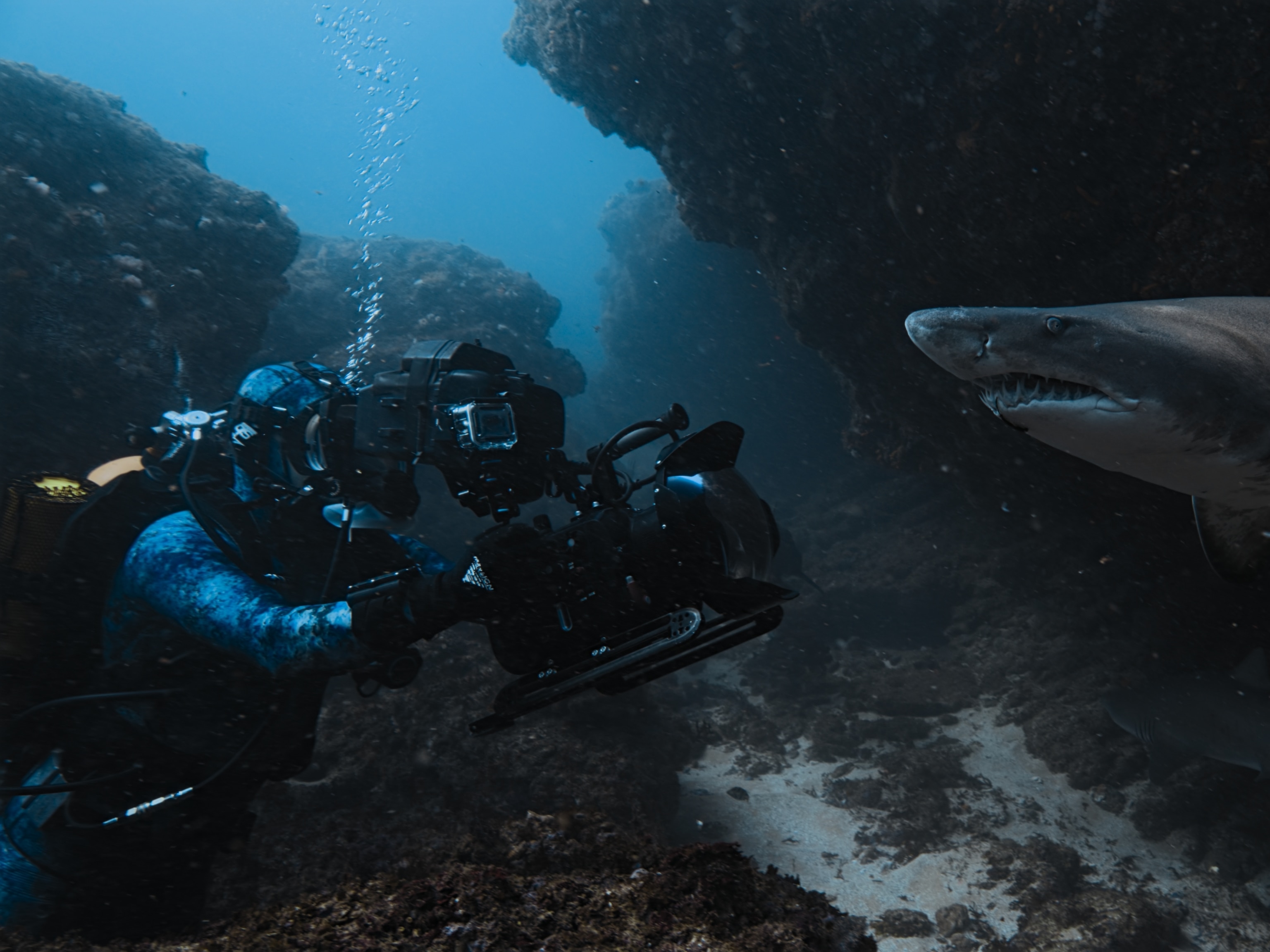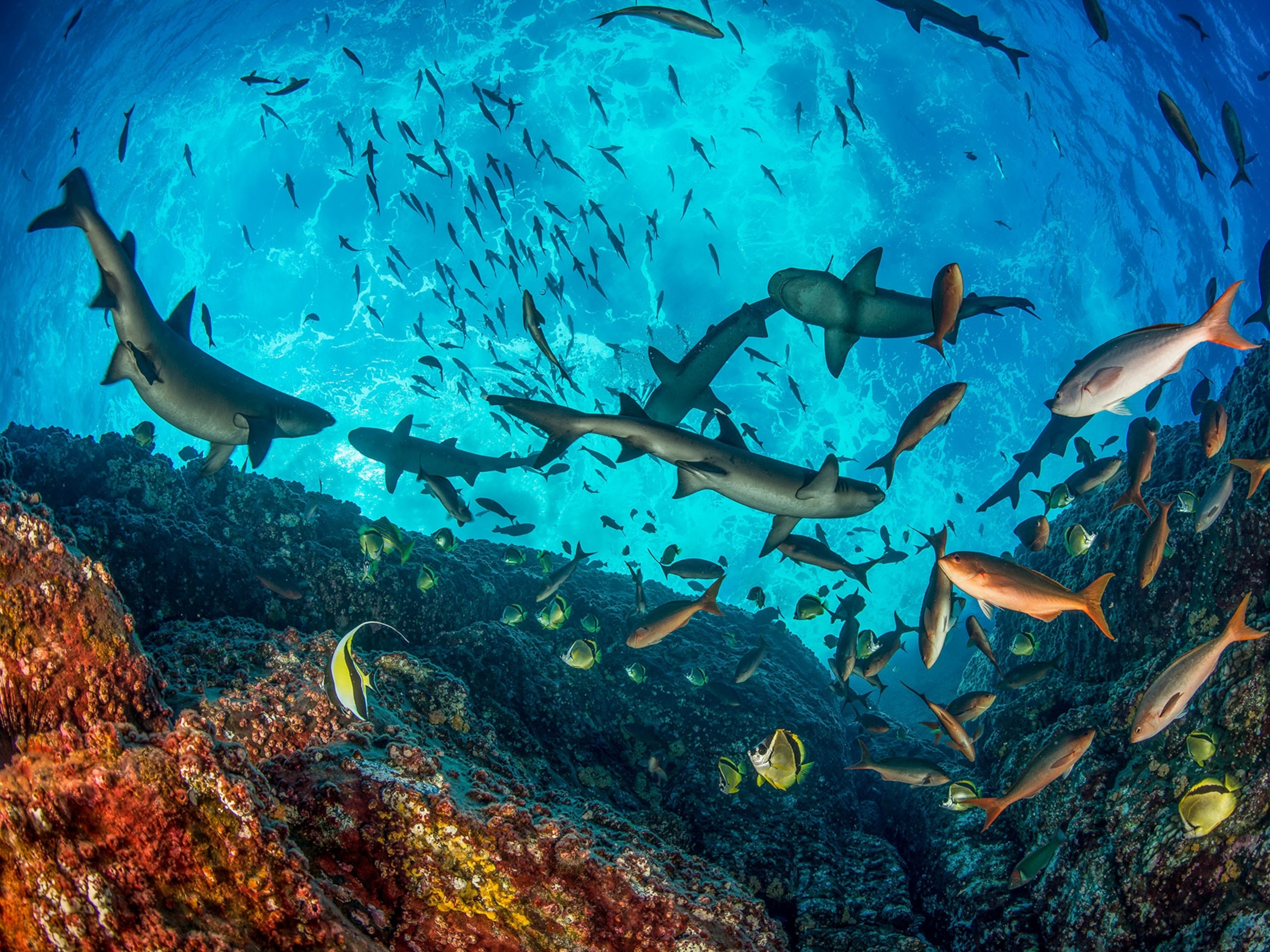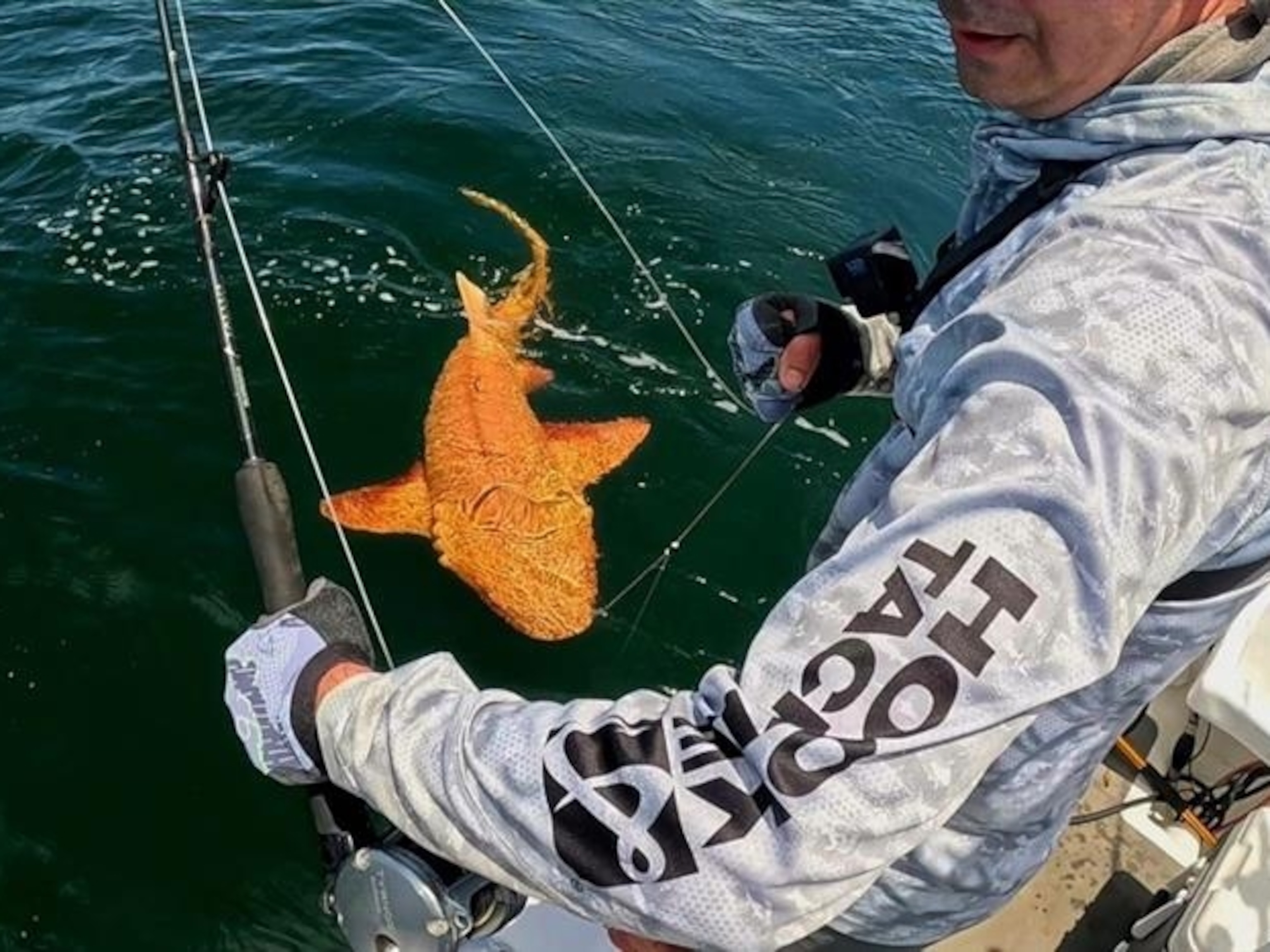This Shark Eats Grass, and No One Knows Why
The bonnethead shark's diet of seagrass has researchers stumped.
These sharks might be taking the expression “eating like a horse” a bit too literally.
Scientists have discovered that some sharks are eating a large amount of seagrass, as a significant part of their diet—but experts aren’t sure why the fish are deviating from their traditional carnivorous diet.
New research has shown that seagrass can make up more than 50 percent of a bonnethead shark’s diet. The small, shovel-headed sharks are closely related to the more familiar hammerheads.
It’s still possible that the sharks are just incidentally munching on seagrass as they feed on other prey, said Samantha Leigh, a Ph.D. candidate at the University of California, Irvine and a National Geographic explorer.
“Even if it is incidental, it is a very large amount of grass, so they have to be able to process that somehow,” said Leigh.
Leigh conducted a nutrient content analysis that showed bonnetheads were digesting 56 percent of the organic matter in seagrass, similar to young sea turtles.
But in order to be considered true omnivores, an animal must obtain nutritional value or energy from the plants they eat. Without knowing why bonnetheads are eating seagrass, it’s hard to know if this habit is purposeful, said Leigh, who is studying the shark’s digestive behavior. (Read more about the behavior of the rare ghost shark.)
“It’s very likely they have some sort of microbiome living in their gut that is producing some of the enzymes that they need to break down this plant material, which is something we commonly find in omnivorous and especially herbivorous species,” she said.
However, younger bonnethead sharks have been found to have more seagrass in their stomachs than adult bonnetheads, which could point to a learning curve as the sharks mature and understand how to feed without simultaneously eating seagrass, said Dana Bethea, a research ecologist with NOAA Fisheries in Florida.
“There’s a lot of prey handling learning that goes on in the younger life stages until they get to be bigger and really get their mouths around what they’re feeding,” she said.
Bethea’s research team hypothesized in her 2007 study that the seagrass found in the stomachs of bonnetheads is just a result of incidental prey capture. (Read about the peculiar diet of the Omura's whale.)
“That’s how we think they get the plant material in their stomachs,” she said. “We don’t think they’re out there eating salad.”
The IUCN Red List of Threatened Species lists all species of the hammerhead shark as endangered, threatened or vulnerable, except for the bonnethead, which is listed as least concern. (See "5 Winners and Losers on New "Red List" of World's Rarest Species.")
Leigh thinks it’s a “definite possibility” that this could be related to their unique diet, though Bethea isn’t sure.
“They’re doing very well on their seagrass diet, apparently,” Leigh said.





